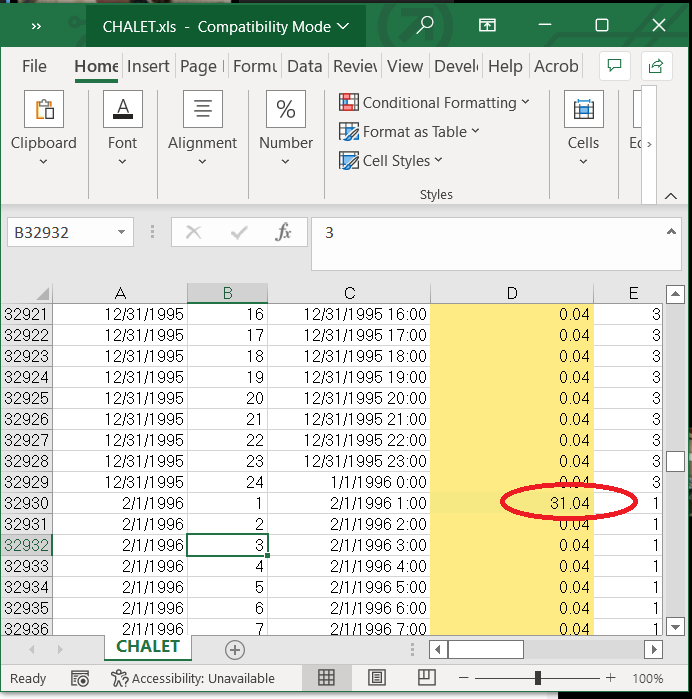The import tool checks if all the time series data has a consistent interval. In the CHALET.xls spreadsheet there is a missing month, January 1996, of data beginning on row 32,930. There is also a missing year (1998) beginning on row 39,209.
In the image below an equation was written in column D to measure the difference in Date/time between successive rows. This technique can be used to check for missing data; if the difference is not consistent the data is considered Irregular.
